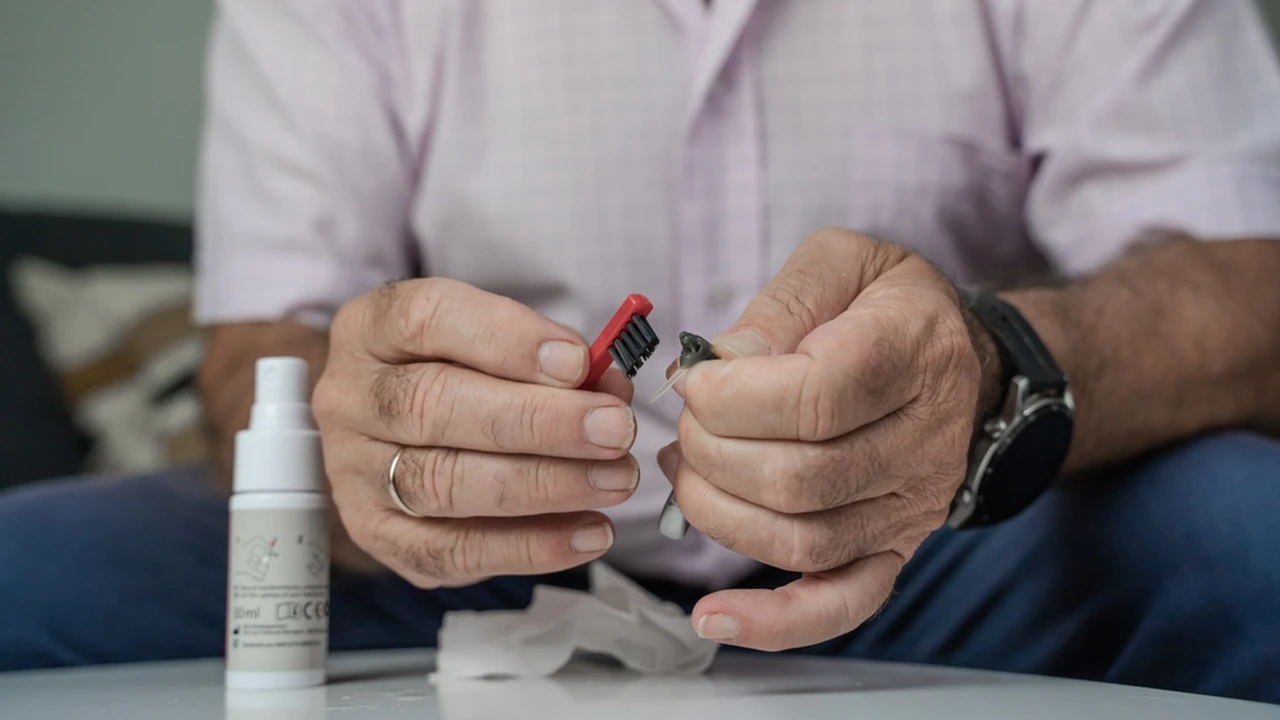Comparing Hearing Aid Brands By Price Point
A comparison of leading hearing aid brands across different price points. Find out which brands offer the best value for your budget.

Comparing Hearing Aid Brands By Price Point
Hey there! So, you're looking into hearing aids, and let's be honest, the price tag can be a bit of a shocker, right? It's not just about finding a device that works; it's about finding one that fits your budget without compromising on quality. That's where understanding different hearing aid brands and their price points comes in handy. We're going to dive deep into the world of hearing aid pricing, looking at some of the top brands, what makes them tick, and how their offerings stack up financially. This isn't just about cheap versus expensive; it's about value, features, and finding the perfect match for your hearing needs and your wallet.
Understanding Hearing Aid Pricing Factors What Influences Cost
Before we jump into specific brands, let's quickly chat about why hearing aids cost what they do. It's not just a simple gadget; there's a lot of sophisticated technology packed into those tiny devices. Here are the main factors that influence the price:
- Technology Level: This is probably the biggest factor. Basic models offer essential amplification, while advanced and premium models come with features like sophisticated noise reduction, speech enhancement, Bluetooth connectivity, AI capabilities, and more. The more bells and whistles, the higher the price.
- Style and Size: Smaller, more discreet models (like invisible-in-canal or completely-in-canal) often cost more due to the intricate engineering required to miniaturize the technology.
- Features and Connectivity: Think about features like rechargeable batteries, smartphone app control, direct streaming to phones and TVs, telecoil, and advanced directional microphones. Each adds to the cost.
- Professional Services: When you buy from an audiologist, the price usually includes comprehensive services like hearing tests, fitting, adjustments, follow-up appointments, and sometimes even a warranty or loss and damage coverage. These services are crucial for optimal performance.
- Brand Reputation and Research & Development: Established brands invest heavily in R&D to bring new innovations to the market. This expertise and innovation are reflected in their pricing.
- Distribution Channel: Buying online, from big-box retailers, or directly from a manufacturer can sometimes be cheaper than through a private audiology practice, but you might miss out on personalized service.
Premium Hearing Aid Brands High End Performance
These brands are often at the forefront of innovation, offering the latest technology, most advanced features, and superior sound quality. They typically come with a higher price tag, but for many, the investment is worth it for the enhanced listening experience and quality of life.
Phonak Hearing Aids Advanced Features and Connectivity
Phonak is a Swiss brand renowned for its cutting-edge technology, especially in connectivity and sound processing. They're often a go-to for people looking for robust solutions for various hearing loss levels.
- Typical Price Range: $2,000 - $7,000+ per hearing aid (often including professional services).
- Key Features:
- AutoSense OS: Automatically adapts to different listening environments for seamless sound optimization.
- Direct Connectivity: Connects directly to virtually any Bluetooth-enabled smartphone (iOS and Android) for streaming calls and media.
- Rechargeable Options: Many models offer convenient rechargeable batteries.
- Roger Technology: Excellent accessories for challenging listening situations, like classrooms or noisy restaurants.
- Speech in Noise: Strong performance in reducing background noise and enhancing speech clarity.
- Recommended Models and Use Cases:
- Phonak Audeo Lumity: This is their flagship line, known for exceptional speech understanding in noisy environments and universal Bluetooth connectivity. Great for active individuals who frequently engage in conversations in challenging settings. Prices can range from $3,500 to $7,000+ per aid, depending on the technology level (L30, L50, L70, L90).
- Phonak Naida Paradise: Designed for severe to profound hearing loss, offering powerful amplification and clear sound. Ideal for those needing significant support. Expect prices from $3,000 to $6,500+ per aid.
- Phonak Virto Paradise: Custom-made in-the-ear options, including invisible-in-canal (IIC) for ultimate discretion. Perfect for users prioritizing aesthetics and a custom fit. Prices vary widely based on customization and technology, typically $2,500 to $6,000+ per aid.
- Why Choose Phonak: If universal Bluetooth connectivity, excellent noise reduction, and robust performance across various soundscapes are your priorities, Phonak is a strong contender.
Oticon Hearing Aids BrainHearing Technology
Oticon, a Danish company, focuses on what they call 'BrainHearing' technology, aiming to support the brain's natural way of processing sound. They emphasize providing a full soundscape rather than just focusing on speech.
- Typical Price Range: $2,000 - $7,000+ per hearing aid.
- Key Features:
- OpenSound Navigator: Provides access to all sounds in a 360-degree environment while balancing noise.
- MoreSound Intelligence: Scans the sound environment 500 times per second to organize sounds and deliver them to the brain.
- Deep Neural Network (DNN): Trained with millions of sound scenes to process sound more like the human brain.
- Direct Streaming: Connects to iPhone and select Android devices.
- Rechargeable Options: Available across many models.
- Recommended Models and Use Cases:
- Oticon More: Their flagship product, known for its BrainHearing technology and DNN. Excellent for users who want a more natural sound experience and better understanding in complex environments. Prices typically range from $3,500 to $7,000+ per aid.
- Oticon Zircon: A newer, more accessible line that brings some of Oticon's core technologies to a slightly lower price point. Good for those seeking quality without the absolute top-tier cost. Expect prices from $2,500 to $5,500+ per aid.
- Oticon Xceed: Specifically designed for severe to profound hearing loss, offering powerful amplification and clear sound. Similar to Phonak Naida, it's for users with significant hearing challenges. Prices can be $3,000 to $6,500+ per aid.
- Why Choose Oticon: If you prioritize a natural, open sound experience and want technology that supports your brain's cognitive load, Oticon's BrainHearing philosophy might be perfect for you.
Resound Hearing Aids Smart Hearing Solutions
ReSound, another Danish brand, is known for its 'Smart Hearing' philosophy, focusing on connectivity and personalized control through smartphone apps. They were pioneers in Made for iPhone hearing aids.
- Typical Price Range: $1,800 - $6,500+ per hearing aid.
- Key Features:
- M&RIE (Microphone & Receiver-In-Ear): Uses microphones both on the hearing aid and in the ear canal for a more natural sound experience.
- Direct Streaming: Made for iPhone and direct Android streaming.
- ReSound Smart 3D App: Offers extensive personalization and control over settings.
- Tinnitus Management: Built-in sound generators for tinnitus relief.
- Rechargeable Options: Available across most lines.
- Recommended Models and Use Cases:
- ReSound ONE: Features M&RIE technology for a more natural sound. Ideal for users who want to preserve the natural sound localization provided by their ear's anatomy. Prices typically range from $3,000 to $6,500+ per aid.
- ReSound OMNIA: Their latest premium offering, focusing on speech understanding in noise and an even more natural sound experience. Great for social butterflies and those who value clear conversations. Expect prices from $3,500 to $7,000+ per aid.
- ReSound Key: A more essential range that offers core ReSound technology at a more accessible price point. Good for first-time users or those with simpler needs. Prices can be $1,800 to $4,000+ per aid.
- Why Choose ReSound: If you're an iPhone user (or select Android) who values direct streaming, personalized control via an app, and a natural sound experience, ReSound is an excellent choice.
Mid-Range Hearing Aid Brands Balanced Value
These brands offer a fantastic balance between advanced features and affordability. You'll find many of the core technologies present in premium models, often at a more palatable price point, making them great value for money.
Signia Hearing Aids Innovative Design and Sound
Signia, part of the WS Audiology group (along with Widex), is known for its sleek designs, innovative features, and focus on speech clarity.
- Typical Price Range: $1,500 - $5,500+ per hearing aid.
- Key Features:
- Own Voice Processing (OVP): Addresses the common complaint of hearing your own voice sounding unnatural.
- Acoustic Motion Sensors: Detects movement to optimize sound processing.
- StreamLine TV/Mic: Accessories for enhanced TV listening and remote microphone capabilities.
- Rechargeable Options: Including their unique 'Styletto' slim-RIC design.
- Direct Streaming: Connects to iPhone and select Android devices.
- Recommended Models and Use Cases:
- Signia Pure Charge&Go AX: Their advanced platform offering excellent speech clarity and OVP. Ideal for users who want a natural sound experience, especially regarding their own voice. Prices typically range from $2,800 to $5,500+ per aid.
- Signia Styletto AX: Combines the AX platform's technology with a stylish, slim-RIC design. Perfect for fashion-conscious users who want discretion and performance. Expect prices from $3,000 to $5,800+ per aid.
- Signia Insio Charge&Go AX: Custom-made in-the-ear rechargeable hearing aids. Great for those who prefer an in-ear solution with modern features. Prices can be $2,500 to $5,000+ per aid.
- Why Choose Signia: If you're concerned about your own voice sounding unnatural, appreciate sleek design, and want strong speech clarity, Signia is a great option.
Widex Hearing Aids Natural Sound Quality
Widex, also part of WS Audiology, has a reputation for delivering exceptionally natural and pure sound quality, often favored by musicians or those who appreciate subtle nuances in sound.
- Typical Price Range: $1,500 - $5,500+ per hearing aid.
- Key Features:
- PureSound: A unique processing pathway designed to eliminate delay and create a more natural sound.
- SoundSense Learn: Uses AI to help users personalize their sound settings.
- ZeroDelay Technology: Minimizes processing delay for a more natural listening experience.
- Direct Streaming: Connects to iPhone and select Android devices.
- Rechargeable Options: Available in various styles.
- Recommended Models and Use Cases:
- Widex Moment: Their flagship line, celebrated for its PureSound and ZeroDelay technology, offering a very natural sound. Excellent for music lovers and those who find other hearing aids sound 'processed.' Prices typically range from $2,800 to $5,500+ per aid.
- Widex Magnify: A more accessible range that still delivers Widex's signature sound quality. Good for users seeking natural sound at a slightly lower price point. Expect prices from $1,800 to $4,000+ per aid.
- Widex Moment CIC-M: One of the smallest rechargeable custom-made hearing aids. Ideal for users who want discretion and the convenience of rechargeability. Prices can be $2,500 to $5,000+ per aid.
- Why Choose Widex: If natural sound quality, especially for music and subtle environmental sounds, is paramount to you, Widex's unique sound processing could be a game-changer.
Entry-Level and Budget-Friendly Options Accessible Hearing Solutions
For those on a tighter budget or with milder hearing loss, there are increasingly good options available. These might not have all the advanced features of premium models, but they provide essential amplification and can significantly improve communication.
Jabra Enhance Hearing Aids Online and Affordable
Jabra Enhance (formerly Lively) is a direct-to-consumer brand that aims to make hearing aids more accessible and affordable by cutting out some of the traditional clinic costs. They offer remote support from audiologists.
- Typical Price Range: $1,195 - $1,995 per pair (often includes remote care).
- Key Features:
- Remote Audiologist Support: Professional adjustments and care via video calls and the app.
- Bluetooth Streaming: Connects to iOS and Android devices.
- Rechargeable Options: Available in their premium models.
- Noise Reduction: Basic to moderate noise reduction capabilities.
- Recommended Models and Use Cases:
- Jabra Enhance Select 500: Their most advanced model, offering rechargeable batteries and more sophisticated sound processing. Good for users with mild to moderate hearing loss who are comfortable with technology and remote care. Prices are typically around $1,995 per pair.
- Jabra Enhance Select 300: A solid mid-range option with good features and remote support. Suitable for similar users as the 500, perhaps with slightly less demanding listening environments. Expect prices around $1,595 per pair.
- Jabra Enhance Select 100: Their most basic and affordable model, offering essential amplification. Best for those with mild hearing loss and a very tight budget. Prices are around $1,195 per pair.
- Why Choose Jabra Enhance: If you're looking for a more affordable solution with professional remote support and are comfortable managing some aspects of your hearing care yourself, Jabra Enhance offers good value.
Lexie Hearing Aids OTC Accessibility
Lexie Hearing is another direct-to-consumer brand, known for its partnership with Bose and offering over-the-counter (OTC) hearing aids. These are designed for adults with perceived mild to moderate hearing loss and can be purchased without a prescription or professional fitting.
- Typical Price Range: $799 - $999 per pair.
- Key Features:
- Self-Fitting: Users can adjust settings via a smartphone app.
- Bluetooth Streaming: Available on some models for calls and music.
- Rechargeable Options: Available in their premium models.
- Lexie Care: Access to support specialists for guidance.
- Recommended Models and Use Cases:
- Lexie B2 Powered by Bose: Their flagship OTC model, offering good sound quality and self-tuning capabilities. Ideal for first-time users with mild to moderate hearing loss who want an affordable, self-managed solution. Prices are typically around $999 per pair.
- Lexie Lumen: A more basic, battery-powered OTC option. Good for those seeking the lowest entry price point for essential amplification. Expect prices around $799 per pair.
- Why Choose Lexie Hearing: If you have mild to moderate hearing loss, are tech-savvy enough to self-adjust, and want a very affordable, convenient solution without clinic visits, Lexie is a strong OTC contender.
Comparing Across Price Points What You Get
Let's put it all together. What's the real difference when you move from a budget-friendly option to a premium one?
- Sound Quality and Clarity: Premium brands generally offer superior sound processing, leading to a more natural, clearer sound, especially in complex listening environments. They excel at separating speech from noise. Mid-range options are very good, while budget options provide essential amplification but might struggle more in noisy settings.
- Noise Reduction: This is a huge differentiator. High-end models have sophisticated algorithms that can identify and suppress various types of background noise (wind, crowd chatter, restaurant clatter) while preserving speech. Mid-range models offer good noise reduction, while budget options have more basic noise filters.
- Connectivity: Most modern hearing aids offer Bluetooth, but premium models often have universal connectivity (to any Bluetooth device) and more seamless streaming. Budget options might be limited to specific devices or have less robust streaming.
- Rechargeability: While increasingly common across all price points, premium and mid-range models often have longer battery life and more convenient charging solutions.
- Personalization and AI: Premium brands leverage AI and machine learning for highly personalized sound experiences that adapt to your unique hearing profile and environment. Mid-range options offer good app control, while budget options have simpler adjustments.
- Professional Services: This is a key difference. Premium and mid-range hearing aids purchased through audiologists include comprehensive fitting, adjustments, and ongoing care, which is vital for optimal performance. OTC and direct-to-consumer models rely on self-fitting or remote support, which may not be sufficient for everyone.
Making Your Decision Finding the Best Value
Choosing the right hearing aid isn't just about the price tag; it's about finding the best value for your specific needs. Here are some tips:
- Get a Comprehensive Hearing Test: This is step one, no matter what. An audiologist can accurately diagnose your hearing loss type and degree, which is crucial for recommending the right device.
- Consider Your Lifestyle: Are you a quiet homebody, or do you frequently attend social gatherings, work in noisy environments, or enjoy live music? Your lifestyle dictates the level of technology you'll need.
- Trial Periods are Your Friend: Many clinics and even some online providers offer trial periods. Take advantage of these to test the hearing aids in your real-world environments.
- Don't Forget Aftercare: The initial purchase price is only part of the equation. Ongoing adjustments and maintenance are essential for long-term satisfaction. Factor in the cost and availability of these services.
- Read Reviews, But Take Them with a Grain of Salt: Reviews can be helpful, but remember that hearing is highly personal. What works for one person might not work for another.
- Ask About Financing and Insurance: Explore all your options for making hearing aids affordable, including payment plans, insurance coverage, and government programs.
Ultimately, the 'best' hearing aid isn't the most expensive or the cheapest, but the one that effectively addresses your hearing loss, fits comfortably, and enhances your quality of life within your budget. Don't be afraid to ask questions, compare options, and advocate for your hearing health. Happy listening!
:max_bytes(150000):strip_icc()/277019-baked-pork-chops-with-cream-of-mushroom-soup-DDMFS-beauty-4x3-BG-7505-5762b731cf30447d9cbbbbbf387beafa.jpg)






